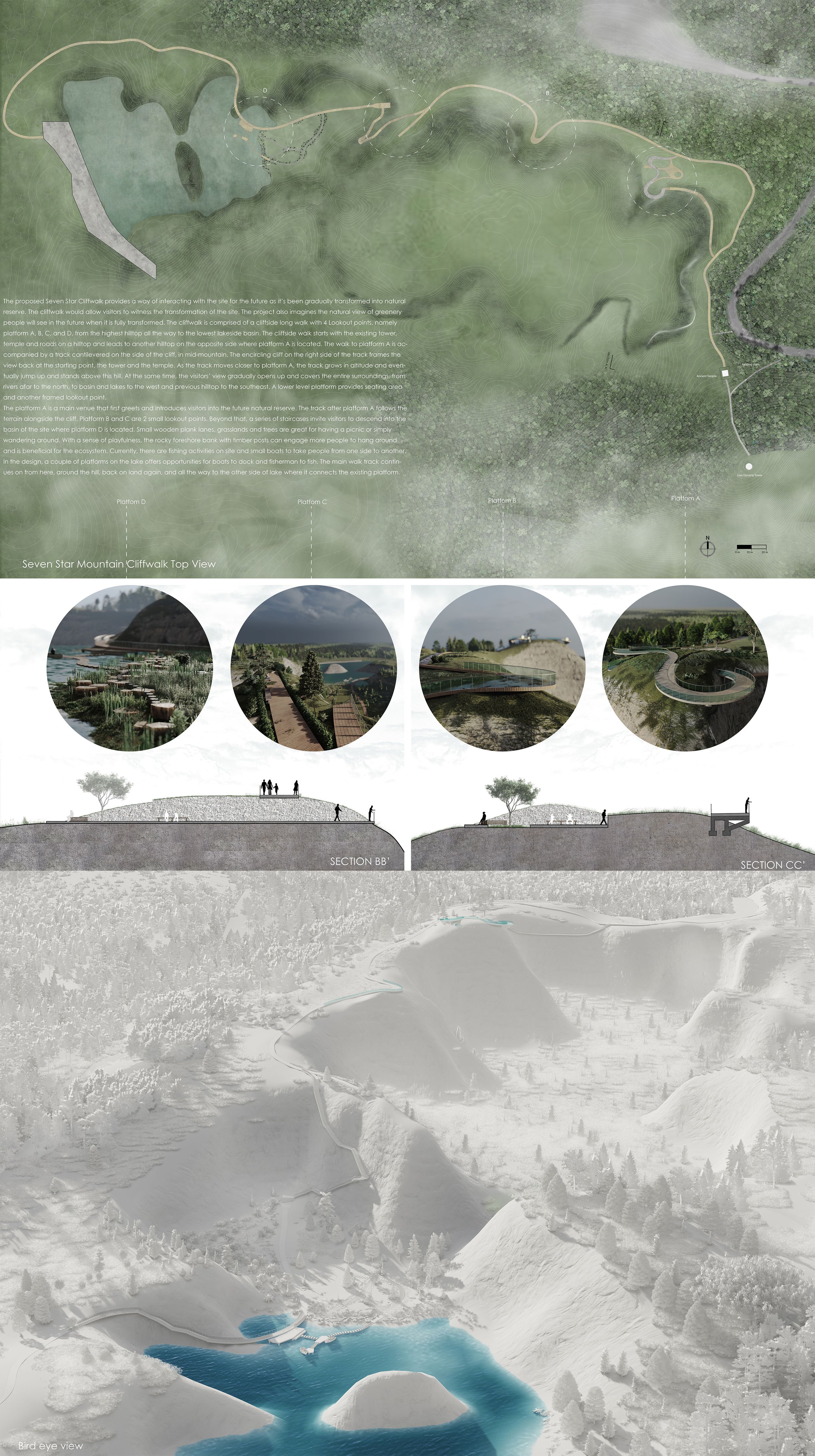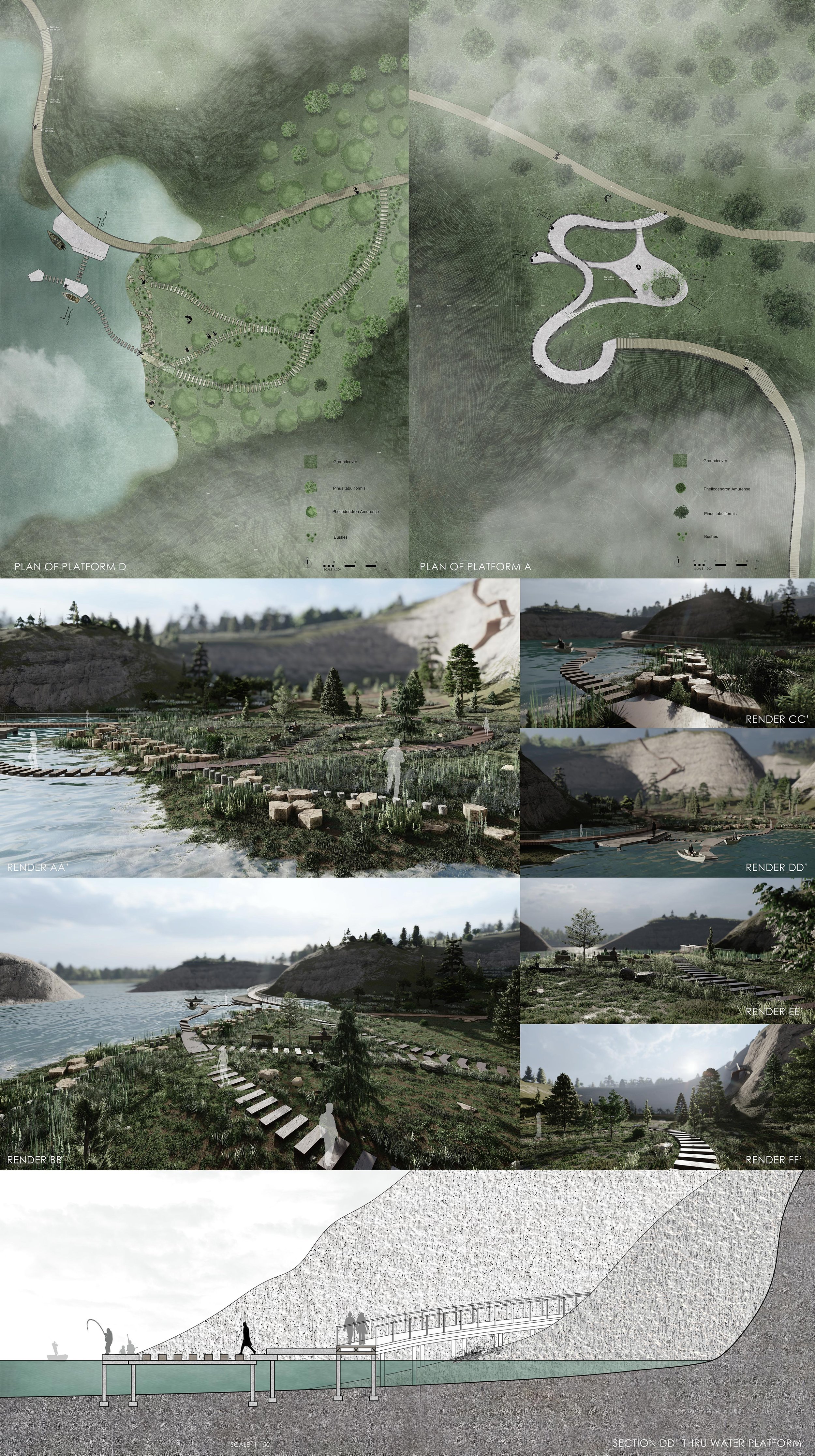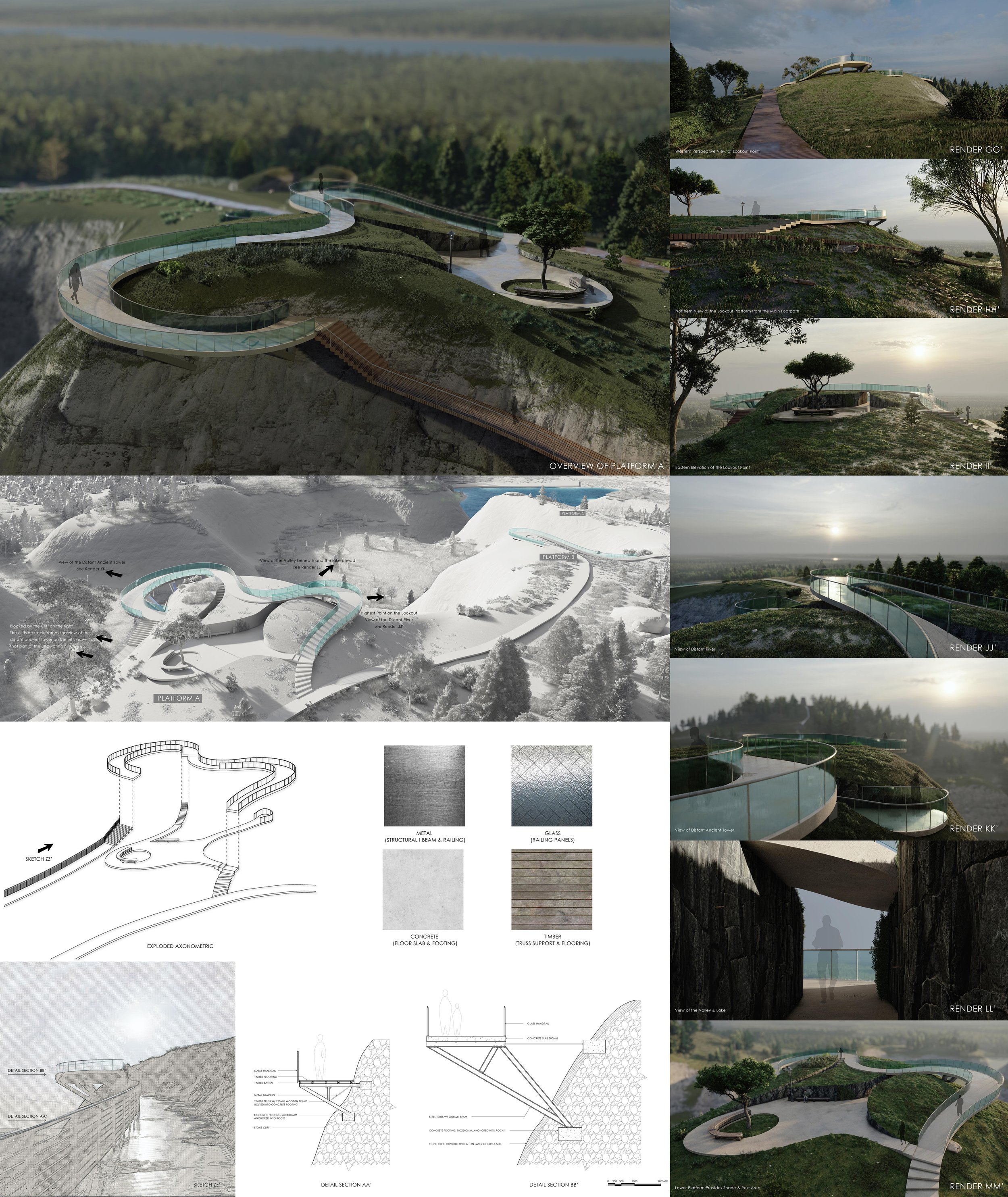
Hilltop Lookout, Liaoning
Seven Star Mountain is located at the Liao river Plain in northeastern China. The mountain is 38km away from Shenyang which is the capital city of Liaoning Province. It was formed in the late Jurassic period and is geographically next to the Liao River. On Seven Star Mountain, there are ancient towers of the Liao Dynasty, ancient temple. People can see the Liao river across the vast plain on the hilltop. It was a combination of cultural landscape and natural landscape, the past and the present are intertwined here. However, in 1950, people began to excavate the mountain for miner. als. The mountain was hollowed out, leaving several large pits and steep walls, which damaged the natural ecological environment. In 2000, the government filled the mountain with sand and soil and began to plant trees and vegetation on the mountain. Since this year, Seven Star Mountain has caught more public attention, with strategic plans rolled out from the government in the hopes of turning this rocky site back into green reserves as it was in early 20th century. However, there is still no infrastructure to the site at the moment which poses inconvenience and danger to people who wishes to access here.



The proposed Seven Star Cliffwalk provides a way of interacting with the site for the future as it's been gradually transformed into natural reserve. The cliffwalk would allow visitors to witness the transformation of the site. The project also imagines the natural view of greenery people will see in the future when it is fully transformed. The cliffwalk is comprised of a cliffside long walk with 4 Lookout points, namely platform A, B, C, and D, from the highest hilltop all the way to the lowest lakeside basin. The cliffside walk starts with the existing tower, temple and roads on a hilltop and leads to another hilltop on the opposite side where platform A is located. The walk to platform A is accompanied by a track cantilevered on the side of the cliff, in mid-mountain.
The encircling cliff on the right side of the track frames the view back at the starting point, the tower and the temple. As the track moves closer to platform A, the track grows in altitude and eventually jump up and stands above this hill. At the same time, the visitors' view gradually opens up and covers the entire surroundings, from rivers afar to the north, to basin and lakes to the west and previous hilltop to the southeast. A lower level platform provides seating area and another framed lookout point. The platform A is a main venue that first greets and introduces visitors into the future natural reserve. The track after platform A follows the terrain alongside the cliff. Platform B and C are 2 small lookout points. Beyond that, a series of staircases invite visitors to descend into the basin of the site where platform D is located. Small wooden plank lanes, grasslands and trees are great for having a picnic or simply wandering around. With a sense of playfulness, the rocky foreshore bank with timber posts can engage more people to hang around and is beneficial for the ecosystem. Currently, there are fishing activities on site and small boats to take people from one side to another. In the design, a couple of platforms on the lake offers opportunities for boats to dock and fisherman to fish. The main walk track continues on from here, around the hill, back on land again, and all the way to the other side of lake where it connects the existing platform.

















